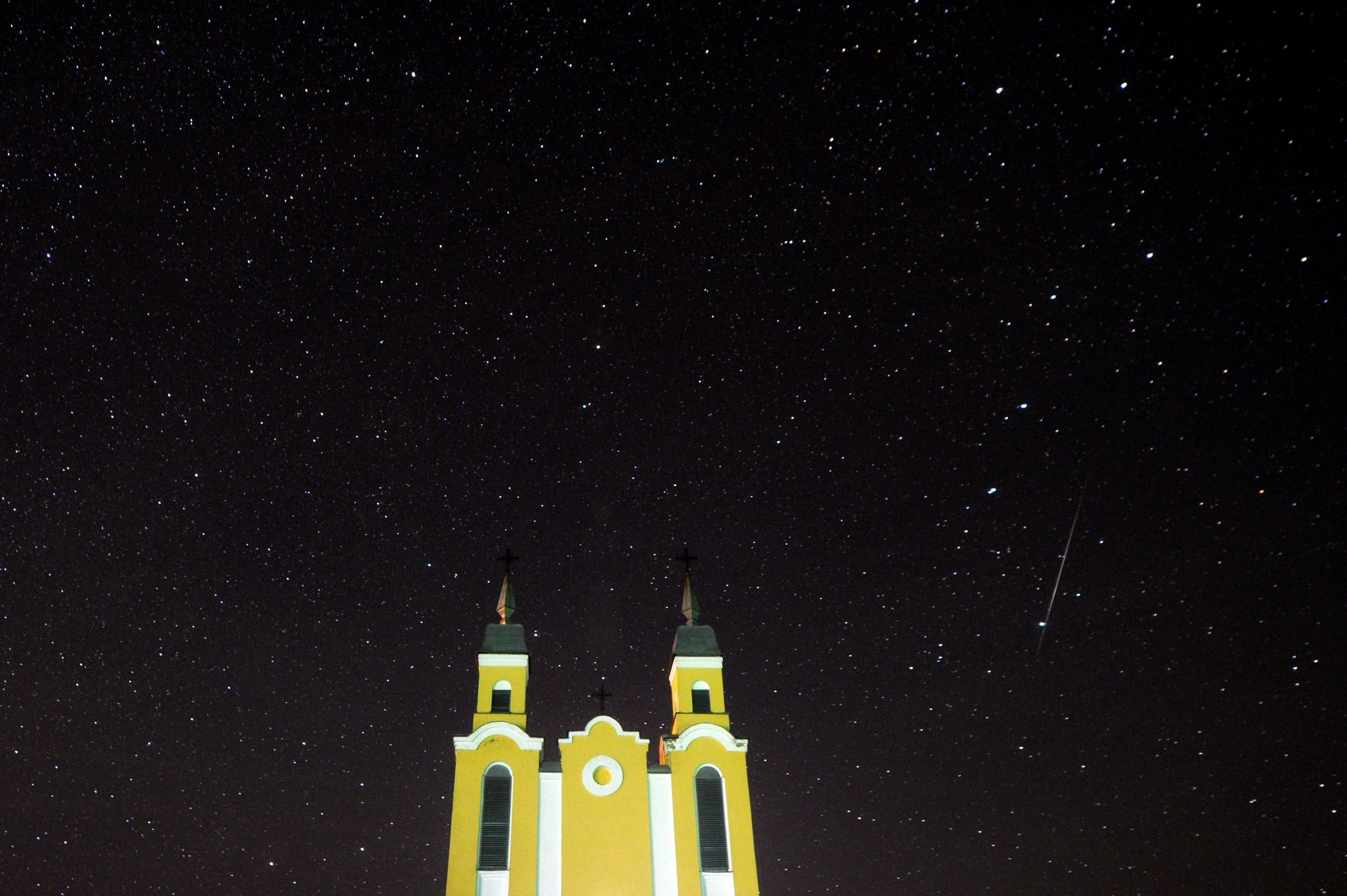
The Geminid meteor shower created quite the light show on Wednesday night, with meteors appearing to streak through the sky in most parts of the world.
Stargazers took to the internet to share photos of what was the greatest meteor shower of the year and Newsweek has picked out a few highlights.
#Geminid meteor seen in Temecula, California last night. What a fantastic meteor shower! #StormHour #ThePhotoHour @ABC7 @pressenterprise @earthsky pic.twitter.com/A1D0GT6xT4
— Wendy (@geococcyxcal) December 14, 2017
The geminid meteor shower yesterday from midnight till 4am. Saw around 180 meteors in the 2 hours I camped. pic.twitter.com/GeJdeoEGFi
— Khalifa Al Katheeri (@EpicKLF) December 14, 2017
The photos demonstrate a couple interesting points about meteor showers. All the streaks of light appear to be falling from the same point—and that is, in fact, how meteor showers are named. When looking at the night sky, the Geminid meteors appear to be falling from the Gemini constellation. That's why the Geminids are named the Geminids. For that same reason, the Leonids are named after Leo, and the Orionids are named after Orion.
But, in reality, that's not where meteor showers come from. In most cases, the streaks of light captured in photos like these are bits of dust and rock falling into Earth's atmosphere and burning up. The debris that creates the light show are the remains of comets that have passed through Earth's orbit. (For the Geminids, it's probably an asteroid, not a comet).
You do not need to look in any particular direction to see the Geminid meteor Shower.
— VirtualAstro (@VirtualAstro) December 13, 2017
The meteors will appear at random in any part of the sky. They can however be traced back to their point of origin in Gemini, hence their name "Geminids"
How to watch: https://t.co/yaVOy0WWKj pic.twitter.com/MXJAAfOGpG
For the Geminids, viewers didn't necessarily have to try and find the radiant constellation in order to see some meteors. While it was possible to trace meteorites back by the trails of light behind them, Sky and Telescope magazine actually recommended facing away from Gemini in order to see shooting stars fly away from it.
For those of you who didn't get a chance to watch live, the kind stargazers of the internet have gone out of their way to document and share what they saw. And if that's not enough, Newsweek will keep you up to date on all the meteor showers to come in 2018. So enjoy, and stay tuned!
Geminid meteor over the church in Mossville, AR earlier this morning. We saw hundreds out there tonight. @WeatherRick #Geminidmeteorshower pic.twitter.com/40prVbHF04
— Charles Peek (@CharlesPeekWX) December 14, 2017
Check out this #Geminid #Meteor spotted from the Mt. Lemmon Sky Center last night. pic.twitter.com/PpWKu6iz7B
— Wes Callison (@WesCallison) December 14, 2017
Uncommon Knowledge
Newsweek is committed to challenging conventional wisdom and finding connections in the search for common ground.
Newsweek is committed to challenging conventional wisdom and finding connections in the search for common ground.
About the writer
Joseph Frankel is a science and health writer at Newsweek. He has previously worked for The Atlantic and WNYC.
To read how Newsweek uses AI as a newsroom tool, Click here.








